LATEST NEWS
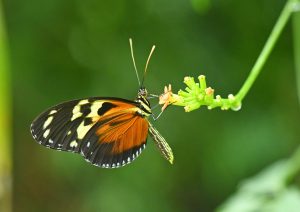
10 étapes pour créer un jardin de papillons en Amérique centrale
Comment attirer, nourrir et protéger les papillons et autres pollinisateurs Créer un jardin de papillons est une façon simple et magnifique de contribuer à la conservation de la biodiversité en Amérique centrale. Avec quelques actions clés, il est possible de transformer n’importe quel espace en refuge pour les papillons, les abeilles et d’autres pollinisateurs essentiels. […]
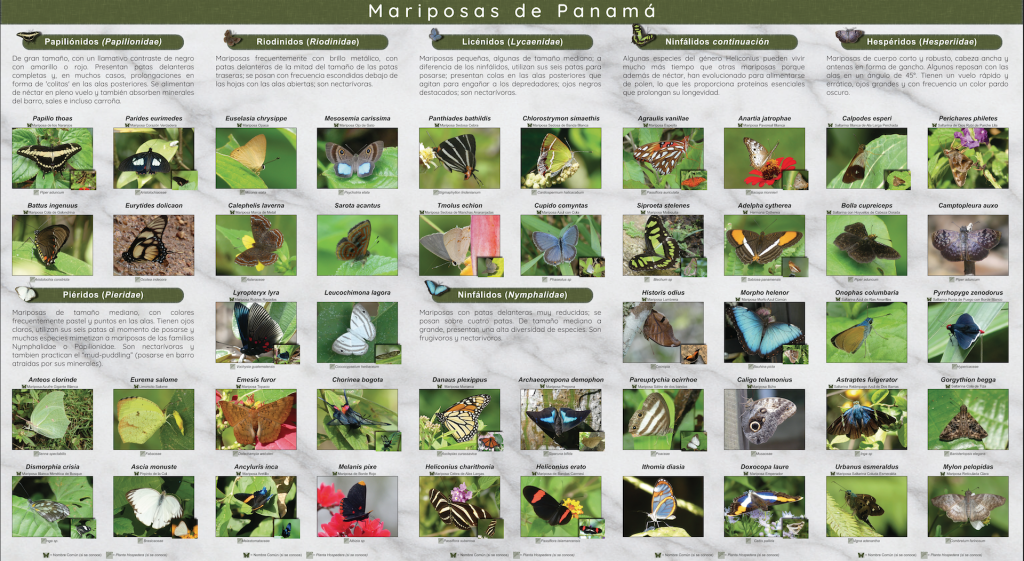
Catalogue des papillons du Panama – Version numérique
Está guía plegable de mariposas de Panamá fue diseñado para facilitar la identificación de las diferentes familias de mariposas ofreciendo información taxonómica sencilla. Se incluye ejemplos de especies panameñas con sus nombres comunes, científicos y plantas hospederas. También incluimos información sobre la ecología y la biología de las mariposas y consejos de avistamiento para que […]
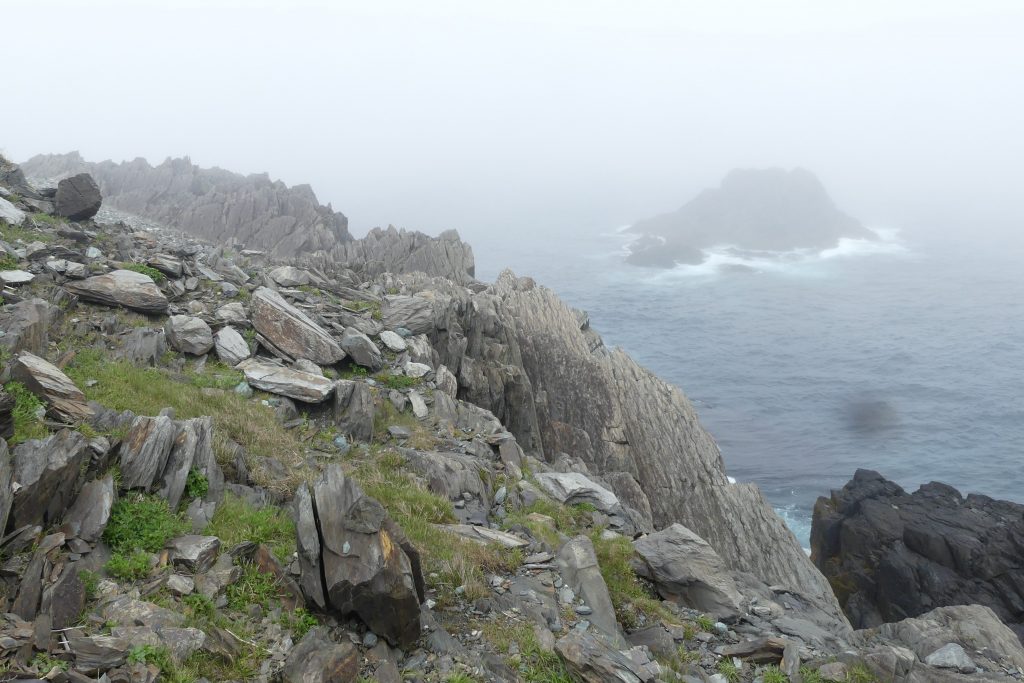
Terre-Neuve – des papillons dans le brouillard et un oiseau surprise
Malgré la réputation de Terre-Neuve comme province maritime brumeuse et fraîche, cette île robuste offre des délices surprenants aux passionnés de nature. Durant une expédition d’une semaine en juillet sur la péninsule d’Avalon, la pluie persistante et le brouillard n’ont pu atténuer l’excitation de découvrir la faune remarquable de la région. Quand de fugaces moments de soleil perçaient la brume, des papillons résistants émergeaient—incluant le précieux Porte-queue à queue courte, une espèce endémique du Canada maritime qui prospère sur les promontoires rocheux même par des températures fraîches de 15 degrés. Mais la surprise ultime est venue sous la forme d’un vagabond légendaire : un Pygargue de Steller, à des milliers de kilomètres de son foyer sibérien, partageant le territoire d’une vallée fluviale avec des Pygargues à tête blanche nicheurs dans l’une des rencontres transcontinentales les plus extraordinaires de la nature.
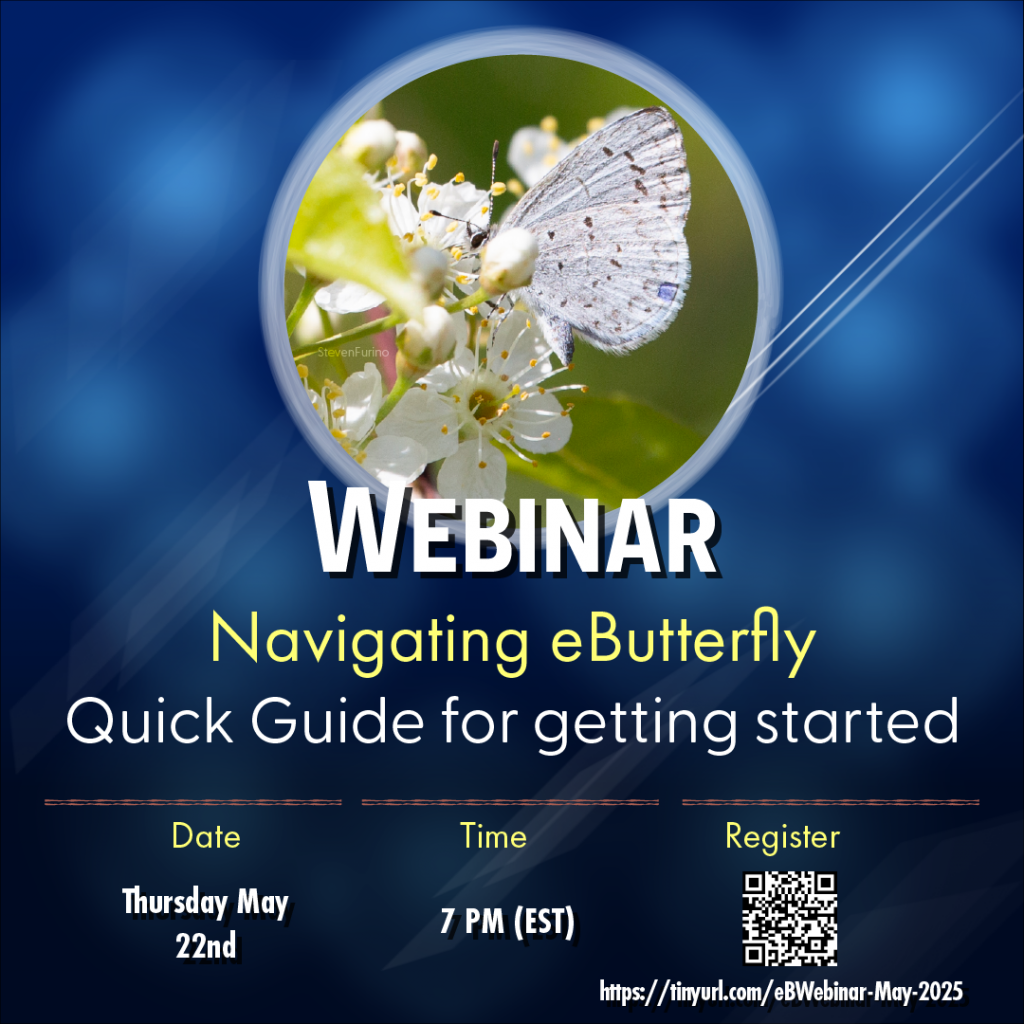
Webinaire – Rejoignez-nous pour notre prochain webinaire : Naviguer sur eButterfly – Un guide rapide pour commencer
Rejoignez-nous pour notre prochain webinaire : Naviguer sur eButterfly – Un guide rapide pour commencer Vous êtes nouveau sur eButterfly ou cherchez-vous un rapide rappel ? Rejoignez-nous pour un webinaire gratuit, Naviguer sur eButterfly : Un guide rapide pour commencer, où nous vous guiderons à travers les bases de l’utilisation de la plateforme et mettrons […]
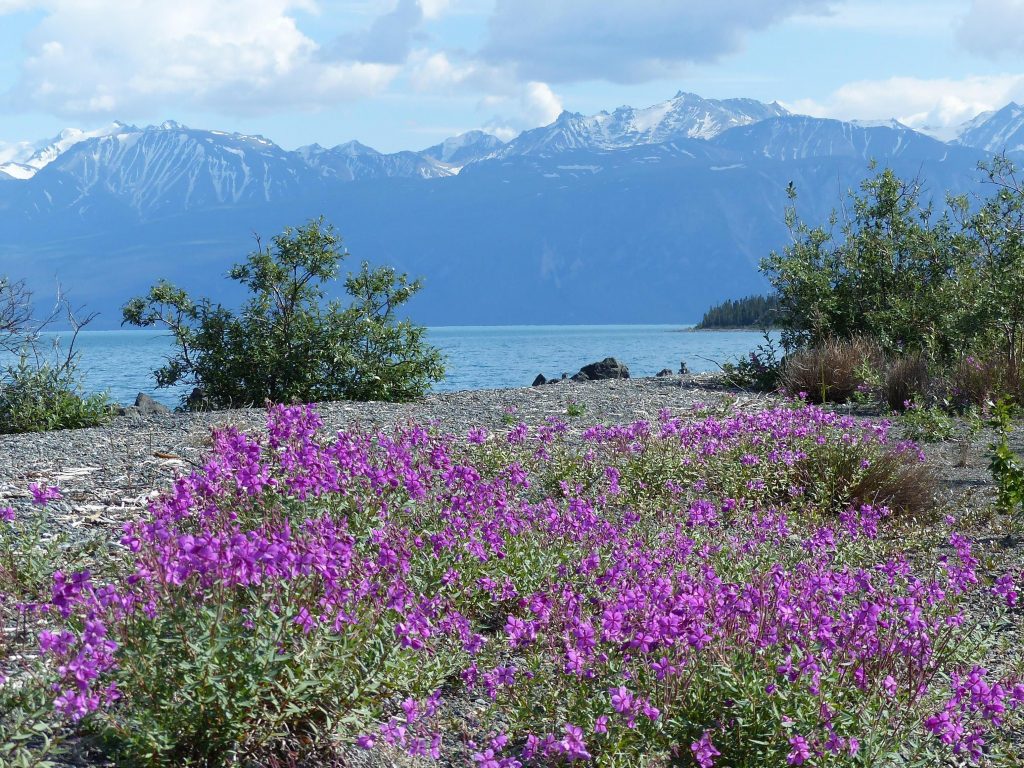
Yukon – papillons du Grand Nord canadien
Au cours des dernières années, j’ai rédigé plusieurs User Stories pour eButterfly. Elles concernaient principalement les voyages que mon épouse Judy et moi avons effectués vers des climats plus chauds pendant l’hiver au Canada. Cette année semble être propice pour passer davantage de temps dans notre pays ; nous prévoyons donc plusieurs voyages en Ontario et, plus à l’est, jusqu’à Terre-Neuve, deux excellentes destinations pour observer les papillons
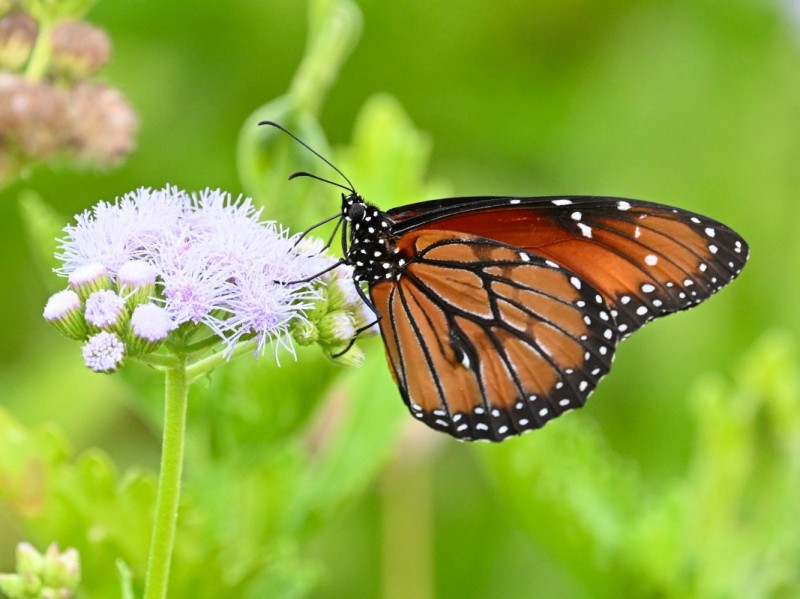
20 % des papillons aux États-Unis ont disparu depuis 2000
Une recherche de l’Université de Binghamton révèle que les populations de papillons aux États-Unis ont chuté de 22 % depuis 2000. En analysant 12,6 millions d’enregistrements, l’étude souligne déclins et appelle à des mesures urgentes de conservation. Ces déclins, liés aux pesticides, au changement climatique et à la perte d’habitats, menacent écosystèmes et beauté naturelle.
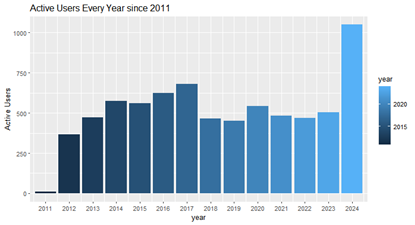
2024 : Une année de croissance et d’impact
Alors que nous réfléchissons à 2024, nous célébrons une année de croissance et d’innovation incroyables chez eButterfly. Avec des milliers de nouvelles observations, une communauté mondiale en expansion et des technologies de pointe, nous transformons la conservation des papillons. Merci de faire partie de cette aventure—2025 promet encore plus de succès !

Belize : un joyau naturel caché
Niché au cœur de l’Amérique centrale, le Belize est un sanctuaire de forêts tropicales luxuriantes, de récifs coralliens vibrants et d’une riche tapisserie culturelle qui appelle les esprits aventureux. Rejoignez Peter Hall et sa femme Judy dans leur évasion de l’hiver torontois pour explorer ce paradis tropical. Des jungles pleines de papillons du Table Rock Jungle Lodge à la superbe réserve forestière de Pine Ridge, leur voyage révèle la biodiversité éblouissante du Belize : 118 espèces de papillons, 123 espèces d’oiseaux et d’innombrables autres merveilles. Avec des éco-lodges proposant des visites guidées, une cuisine locale et l’arôme du café fraîchement torréfié, ce voyage est une plongée enchanteresse dans la splendeur de la nature, maintenant immortalisée sur eButterfly.
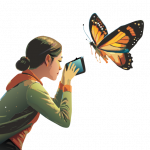
Découvrez l’art de l’identification des papillons sur eButterfly
Participer à l’identification des observations sur eButterfly est une activité passionnante et collaborative accessible à tous. Dans cet article, nous vous expliquons tout ce qu’il faut savoir sur le système d’identification d’eButterfly et comment vous pouvez contribuer à la science et à la conservation des papillons.
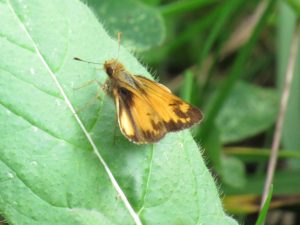
Hespérie de Zabulon trouvée dans le Vermont
Il a fallu moins d’un mois à Terri Armata, l’une de nos bénévoles vedettes de l’atlas des papillons, pour trouver et documenter la 119ème espèce de papillon pour le Vermont, établissant ainsi son quatrième record pour l’État. Le 22 août, elle a localisé un mâle frais de Hespérie de Zabulon (Lon Zabulon) dans un champ […]

(English) Sachem Skipper is the Latest New Butterfly Species Recorded for Vermont
Terri Armata, une passionnée de papillons, vient de faire une découverte extraordinaire en Vermont. Une nouvelle espèce de papillon a été identifiée ! Découvrez les détails de cette trouvaille rare dans notre dernier article de blog.
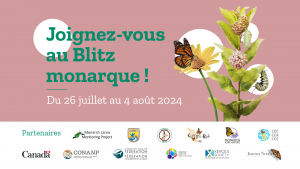
Participez au Blitz International de Surveillance des Monarques (du 26 juillet au 4 août 2024)
Le Blitz International de Surveillance des Monarques invite les scientifiques communautaires de toute l’Amérique du Nord à unir leurs forces pour aider à protéger et conserver le Monarque bien-aimé et emblématique.

Événement de Lancement de l’Application Mobile
Nous tenons à exprimer nos sincères remerciements à tous ceux qui ont assisté à notre événement de lancement de l’application mobile. Votre enthousiasme et votre soutien comptent énormément pour nous, et nous sommes ravis d’avoir partagé cette étape importante avec vous !
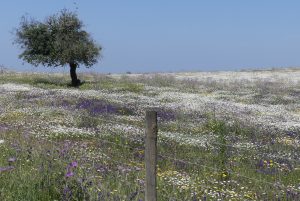
Destination de papillons dans le sud du Portugal
Accompagnez Peter Hall et sa femme Judy dans leur voyage fascinant à travers le sud du Portugal, où ils ont exploré les régions de l’Algarve et de l’Alentejo à la recherche de papillons et d’oiseaux rares et endémiques. Des marais colorés aux pittoresques vallées fluviales, cette aventure pleine de découvertes naturelles vous mènera à certains des meilleurs sites d’observation des papillons en Europe. Ne manquez pas ce récit passionnant sur notre blog de science communautaire dédié à la conservation des papillons !

Vanesses amirales volant vers le nord
En ce moment, des centaines de milliers, peut-être des millions, de papillons volent vers le nord. Par une journée ensoleillée de la dernière semaine dans le nord-est de l’Amérique du Nord, il était impossible de ne pas les remarquer en train de passer ou de s’arrêter à une fleur pour faire le plein. Non, ils ne sont pas des Monarques. Ce sont des Vanesses amirales, et environ tous les dix ans, il y a une migration massive vers le nord depuis quelque part du sud. C’est l’une des nombreuses grandes migrations qui passent souvent inaperçues par beaucoup de gens.

Dernières mises à jour prêtes et bien d’autres à venir !
Une nouvelle saison de chasse aux papillons apporte non seulement des fleurs mais aussi une nouvelle version fraîche de notre plateforme. Vous avez peut-être déjà remarqué quelques petits changements sur le site, comme la nouvelle statistique “Identifiants” sur la page d’accueil. Cette fonctionnalité met en avant les nombreux utilisateurs qui aident à identifier les observations […]
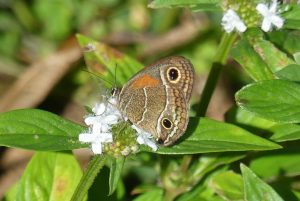
Les Papillons de la République Dominicaine
Dans ce texte, Peter Hall raconte son expérience d’observation des papillons en République dominicaine pendant l’hiver nordique. Sans louer de voiture, il a exploré la péninsule de Samaná à pied depuis un petit hôtel à Las Galeras. Pendant sa semaine là-bas, il a identifié 48 espèces de papillons, dont des endémiques de l’île d’Hispaniola. Il met en évidence la présence d’espèces telles que Calisto et divers sphingidés. De plus, il mentionne l’observation d’espèces rares et endémiques, telles que l’Hesperiidae V-mark haïtienne et le papillon Dynamine. Il partage également des découvertes sur les distributions de certaines espèces et les sources littéraires consultées.
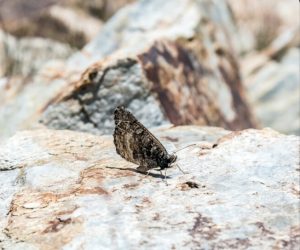
Le papillon le plus élevé d’Amérique du Nord enregistré.
Perché dans la zone alpine du mont Whitney, le plus haut sommet de Californie, se trouve une population de la sous-espèce du Chryxus Arctique connue sous le nom d’Arctique d’Ivallda (Oeneis chryxus ivallda). Grâce à Zachary MacDonald et à ses collègues qui l’ont trouvée, elle est également connue comme la plus haute papillon d’Amérique du Nord. L’équipe a récemment publié ses découvertes et elles sont désormais partagées avec e-Butterfly.

Du Canada au Mexique : L’Épique Ultramarathon d’Anthony Battah pour les Papillons Monarques
C’est aujourd’hui, 1er novembre, el dia de los muertes, qu’Anthony Battah (@ultra-trail Monarque) termine son ultra-marathon jusqu’aux sites d’hivernages du papillon monarque dans l’État du Michoacan au Mexique. 4500km(!!!!!) plus tard après être parti de l’#Insectarium pour son périple le 29 juillet dernier. Anthony a choisi de recréer le parcours migratoire du monarque pour sensibiliser […]
(English) Ninth Annual Report to Tohono Chul Docent, Volunteer and Staff Lépidoptérophiles
Désolé, cet article est seulement disponible en English.
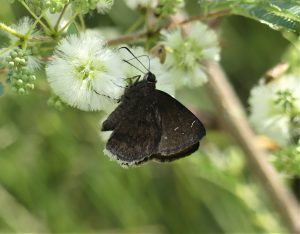
Papillons et sécheresse dans le sud-est de l’Arizona
Par Peter Hall, conseiller d’eButterfly Une sécheresse à long terme a frappé de nombreuses parties de l’ouest des États-Unis de manière intermittente depuis des années. Le sud-est de l’Arizona a été sujet à ces périodes de sécheresse, parfois avec des effets graves sur la végétation et la faune. Andrew Hogan, dans une publication précédente sur […]

Le papillon “La Carte” (Araschnia levana) – Theo de la Ruelle
Le papillon carte (ou simplement la carte) (Araschnia levana) est un papillon commun aux Pays-Bas et on peut le trouver partout dans notre pays. Cependant, lors du recensement annuel des papillons, la carte ne figure pas dans le top dix, et dans la plupart des années, elle ne fait même pas partie des vingt premiers.

Webinaire – Apprendre à identifier les papillons du Canada (17 juillet, 18h HNE)
Pendant le webinaire, Kirstyn vous fournira des astuces précieuses, des techniques et des exemples concrets pour vous aider à maîtriser l’identification des papillons. Que vous soyez débutant ou que vous ayez déjà de l’expérience, cette session promet d’être un voyage captivant et éducatif dans le monde des papillons.

Papillons rares dans le nord de l’État de New York
Parmi les habitats les plus uniques et les plus menacés de l’est de l’Amérique du Nord se trouvent les plaines de sable du centre de l’État de New York. Les dunes localisées et vallonnées de cette région sont recouvertes de pins à crochets avec une végétation basse dominée par des lupins de soleil. Cette combinaison en fait également l’un des derniers bastions pour plusieurs espèces de papillons qui sont également menacées.
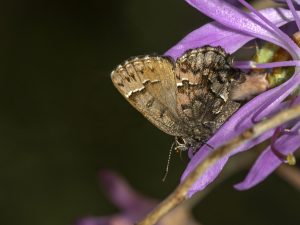
Après deux décennies de recherche, une rare papillon est découvert lors de l’Atlas des papillons du Vermont.
Presque chaque printemps au cours des 21 dernières années, Bryan Pfeiffer s’est aventuré dans certains des marécages les plus reculés du Vermont. En chemin, il a fait don de son sang aux mouches noires, s’est enfoncé dans la boue et s’est parfois demandé s’il sortirait vivant de certains marécages.
(English) Webinar recorded – eButterfly Global (V 6.50)
Désolé, cet article est seulement disponible en English.
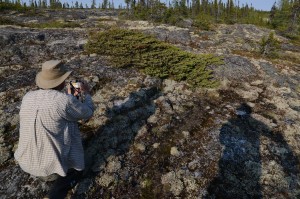
Dix trucs pour photographier les papillons (sans nouvel appareil photo)
(English) The butterflies are out and many of us are eager go butterflying with our cameras and bring images home to share. While I don’t fancy myself as an expert photographer, I sure love to photograph butterflies and other insects. I realized over time that many tricks I took for granted to approach butterflies were foreign to many naturalists especially those new to it. After sharing some tips on how to approach butterflies and better photograph them with friends and colleagues and seeing them come back with much improved results and more species than they use to find, I thought this might be helpful to share.

Les Vermontois sont invités à aider à la recherche de papillons
Les Vermontois ont maintenant une autre excuse pour sortir pendant les journées ensoleillés : se joindre à une enquête à l’échelle de l’État sur les insectes les plus charismatiques – les papillons. Le Vermont Center for Ecostudies (VCE) recrute des bénévoles pour aider à fouiller des champs et des marais, des montagnes et des prairies, et même leurs propres arrière-cours pour documenter l’état des papillons du Vermont.

Déclin des monarques observé dans les sites d’hivernage mexicains
La situation de la population de l’est du monarque migrateur est préoccupante. De nouveaux rapports révèlent une baisse significative de sa population et une perte d’habitat dans les forêts où il passe chaque hiver. En une seule année, la superficie occupée par les papillons monarques dans leur habitat d’hivernage a chuté de 22 %, passant […]

eButterfly: retour sur une année bien remplie!
Alors que l’heure est au bilan, l’équipe de eButterfly est remplie de gratitude pour tout ce qui a été accompli en 2022. Des suivis individuels de papillons à la compilation de données sur la répartition et l’abondance des espèces, la contribution de notre communauté de participants passionnés est d’une valeur inestimable pour la recherche sur les lépidoptères.
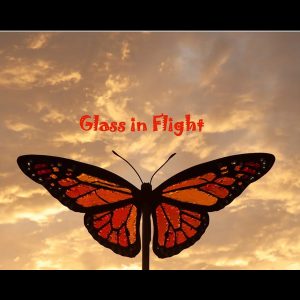
L’exposition “Glass in Flight” à l’Arizona Sonora Desert Museum
Glass in Flight (“Verre en vol”), la nouvelle exposition de sculptures en verre et en métal de papillons, de libellules, de bambou, d’abeilles et de coléoptères par Alex Heveri est lancée à l’Arizona Sonora Desert Museum (ASDM)! Ce “musée” en plein air est à la fois un zoo, un musée d’histoire naturelle et un jardin botanique mais, peu importe comment on l’appelle, l’ASDM est l’endroit tout indiqué pour découvrir la biodiversité du désert de Sonora, des mygales aux chèvres de montagne, en passant par les pécaris. Le jardin botanique met en valeur la végétation unique de la région.

Un papillon rare mangé par une grenouille menacée
Pendant deux semaines de vacances en Arizona à la fin du mois d’octobre, j’ai visité la réserve naturelle du canyon Ramsey, dans les montagnes Huachuca. Lors d’une randonnée le long du ruisseau dans le canyon, je suis tombé sur un petit étang couvert de lentilles d’eau. Une piéride de Chiricahua femelle (Neophasia terlootii), une espèce rare et très localisée, s’est posée sur la végétation flottant à la surface pour boire.
(English) Top Observers of the 2022 Butterflying Season!!
(English) If you want to see where you ranked, as well as other stats such as the number of photos, identifications, and individuals for your specific state/province, make sure to visit our User Explorer
(English) Community Scientist Discovers New Butterfly Species for Vermont
(English) Terri Armata, one of Vermont’s most ardent butterfly watchers, has done it again. For the second year in a row she has recorded a new butterfly species for Vermont. On June 30th in the far southwest corner of Vermont she photographed a Northern Oak Hairstreak (Satyrium favonius ontario) among the Banded Hairstreaks (Satyrium calanus) nectaring at Common Milkweed.
(English) Let your voice be heard and help shape the future of eButterfly!
(English) Help us shape eButterfly for the coming years!.
We are putting together our strategic plan and want to hear from you!
Please fill out this 1-minute anonymous survey and let your voice be heard!
(English) What is flying around? New eB experimental feature!
(English) Any Plans for this weekend? Do you want to know what is flying around today in your area?
We just put together an app that helps you with that!
Just draw around your area of interest, wait for a few seconds, and see all the species that had been reported there and when it is more probable that they’ll be flying there!
(English) Most Wanted Butterflies!
(English) We just compiled a list of the “Most Wanted Butterflies” at eButterfly.
We have very few records of these species, and they would be lifers for most people.
How many of these butterflies do you have on your life list?
(English) Glass in Flight, Definitively Worth Checking this out!
(English) Glass in Flight, the amazing new glass and steel sculpture exhibit of sparkling butterflies, dragonflies, bamboo, bees and beetles by Alex Heveri, will soon be flying on its way to the Arizona Sonora Desert Museum!
(English) Join the International Monarch Monitoring Blitz (July 29-August 7)
(English) The International Monarch Monitoring Blitz invites community scientists from across North America to come together with the shared goal of helping to protect and conserve the beloved and emblematic monarch butterfly. Data collected by volunteers each year support trinational efforts to better understand the monarch butterfly’s breeding productivity, range, and timing in North America.
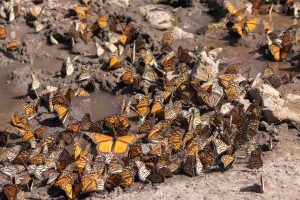
Rejoignez notre tout nouveau forum de discussion maintenant !
Notre vision est de faire d’eButterfly la plus grande communauté de papillons au monde !
Pour atteindre cet objectif, nous venons de lancer notre forum de discussion. Dans cet endroit, vous interagirez avec tous les autres utilisateurs d’eButterfly et parlerez de tout ce qui concerne les papillons, des identifications, de la science, des histoires, des demandes de fonctionnalités et bien plus encore !
(English) Learn all about eButterfly V6.0 Webinar Recorded
(English) Join Rodrigo Solis Sosa, our Human Network and Data Coordinator, as he explains how to use eButterfly and our latest updates on eButterfly V6.0 in this recorded webinar from July 25th. We hope you will join the eButterfly community to help us track butterflies for science and conservation.
(English) eButterfly V6.0 is here!
(English) After almost a year in the making, thousandths of development hours, and an immense amount of feedback from our users. July 20th at midnight (EST), the wait will be over, eButterfly V6.0 is here!
We made a considerable effort to make this new version as similar as possible to the previous but simultaneously with several key new features and massive performance improvements.
Please join us tomorrow, Thursday, July 21st at 4 PM (EST) for a webinar where we will introduce all those new features.
(English) eButterfly Webinar on July 21st, 4 PM (EST)
(English) Do you want to learn about the latest features released on eButterfly such as computer image recognition, a discussion forum, eBLabs, and more? Or maybe you’d like to learn how to use eButterfly for its full potential? If so, don’t miss our upcoming webinar on Thursday, July 21st, at 4 PM (EST) with Rodrigo Solis Sosa, our Human Network and Data Coordinator. Pre-register here: https://bit.ly/3IxTUSj
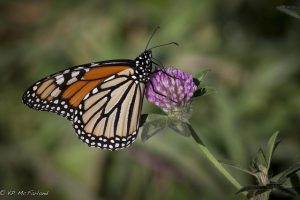
Hausse de la population de monarques de l’est
(English) The presence of monarch butterflies in Mexico’s forests this past winter was 35% greater than the previous year, according to the most recent survey led by WWF Mexico. This increase marks a sign of recovery—albeit a fragile one—and gives some reason for hope against a backdrop of several decades of decline for the iconic species. According to the survey, Forest Area Occupied by the Colonies of Monarch Butterflies in Mexico During the 2021-2022 Overwintering Season, the species’ presence in and around Mexico’s famed Monarch Butterfly Biosphere Reserve grew from 5.19 acres in December 2020 to 7.02 acres in December 2021.
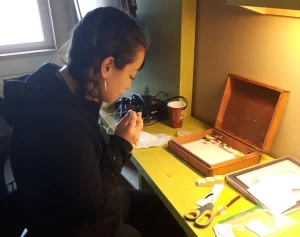
Une jeune Inuk découvre une nouvelle sous-espèce de papillon dans le cadre d’un programme de l’Insectarium de Montréal
(English) It was a cloudless midsummer day in 2019 when Siaja Parceaud-May noticed a Booth’s sulphur butterfly that had some “noticeable differences.” She was about an hour north of her home community of Kuujjuaq in Quebec’s Nunavik region with a team of entomologists and researchers from the Montreal Insectarium, learning how to identify and collect butterflies. Along a sandy, cleared ridge toward Ungava Bay, she spotted the peculiar critter that would be sent to Montreal for further analysis. Her hunch turned out to be right. More than a year later, insectarium director Maxim Larrivée wrote to her — confirming that she had discovered a new subspecies of Colias tyche. To her surprise, it would be named in her honour: Colias tyche siaja.

(English) Parnassius iBook for our community
Nous sommes très heureux que Kim Moss, Dr. Diane Debinski et Simone Durney aient enfin sorti leur iBook “Wings that Make Waves” et reconnaissants qu’ils partagent leur iBook avec nous
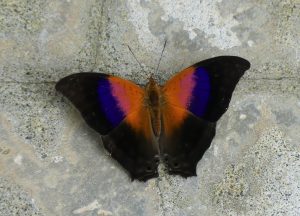
Panama: morphos, riodinidés and mimes
Peter Hall, conseiller scientifique pour eButterfly, nous fait le récit d’un séjour au Panama riche en observations!
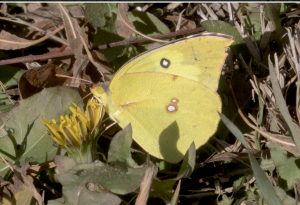
Bilan annuel eButterfly 2021
Avec des listes d’observations des tropiques du Panama aux îles d’Hawaï en passant par Yellowknife dans les Territoires du Nord-Ouest du Canada, 2021 a été une année incroyable pour eButterfly. Il ne fait aucun doute que 2021 a encore été une année difficile en raison de la pandémie de covid-19, amenant davantage de personnes à se rendre dans la nature pour trouver du réconfort, de l’espoir et un sentiment de connexion avec les autres. Merci de nous avoir rejoint!
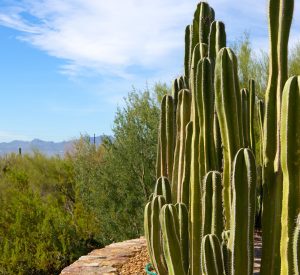
Trouvailles dans le parc Tohono Chul: des papillons dans le désert
Andrew Hogan, passionné de papillons et utilisateur de longue date d’eButterfly, partage avec nous ses découvertes du parc Tohono Chul en Arizona, où il mène depuis 2014 un décompte hebdomadaire des papillons. Découvrez certaines de ses découvertes et, qui sait, peut-être trouverez-vous l’inspiration pour commencer un décompte hebdomadaire près de chez vous !
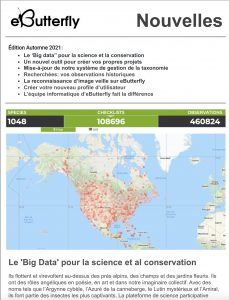
eButterfly Nouvelles Édition Automne 2021
Édition Automne 2021: Le ‘Big data’’ pour la science et la conservation, Un nouvel outil pour créer vos propres projets, Mise-à-jour de notre système de gestion de la taxonomie, Recherchées: vos observations historiques, La reconnaissance d’image veille sur eButterfly, Créer votre nouveau profile d’utilisateur, L’équipe informatique d’eButterfly fait la différence.
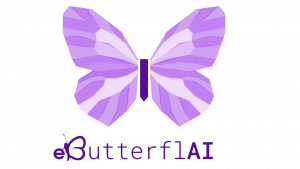
Vision par ordinateur: garder un œil sur eButterfly
eButterfly, en collaboration avec Mila, a créé eButterflAI, un algorithme de reconnaissance d’image qui identifie les genres et les espèces de la plupart des papillons d’Amérique du Nord en utilisant des images et leur localisation. L’algorithme a été entraîné à partir de centaines de milliers d’images provenant de différentes sources.
(English) Recorded Webinar: Using Community Science Data to Monitor Butterflies
(English) Butterfly walks are not only a relaxing activity, but also an invaluable source of data for science. Join Dr. Federico Riva as he discusses the importance of the checklists recorded in eButterfly for his work: (i) the use of butterfly checklists to understand population changes and inform conservation practices; (ii) the importance of “imperfect detection” – our inability to see all butterflies when we are looking for them – and how we can maximize the number of butterflies that we see at a site; (iii) his current work with eButterfly, that leverages thousands of observations from community scientists to help understand regions of conservation priority across North America.
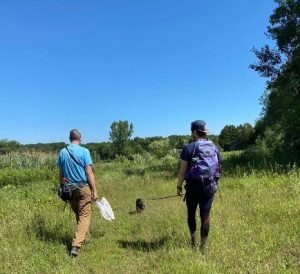
Un stagiaire post-doctoral se joint à l’équipe de eButterfly
Nous sommes heureux d’accueillir Federico Riva, PhD pour un stage post-doctoral. Au cours des prochains mois, il étudiera la répartition des papillons de jour d’Amérique du Nord et les tendances de leurs populations dans le but d’améliorer les méthodes de suivi. Nous lui avons demandé de nous parler de son parcours et de son expérience avec les papillons. Bienvenue dans l’équipe de eButterfly, Dr Riva!
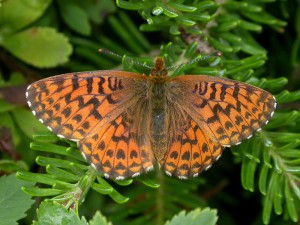
Mise à jour de la taxonomie dans eButterfly
Après des mois de travail, une version corrigée et améliorée de la taxonomie utilisée dans la base de données de eButterfly est désormais en ligne. Cette mise à jour améliorera le partage d’observations et l’exploration des données par les utilisateurs.
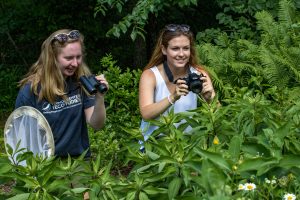
Le 4 juillet, sortez observer les papillons!
Le décompte annuel du 4 juillet est à nos portes! Chaque année, des centaines d’adeptes de l’observation des papillons participent à un effort conjoint pour compter les papillons dans des parcelles pré-établies de 12 km de rayon. La plupart des relevés sont réalisés par plusieurs personnes réparties à l’intérieur de chaque parcelles qui combinent leur résultats pour obtenir un décompte total d’espèces. Ces données sont ensuite utilisées pour des comparaisons entre les années. Ces suivis à long-terme permettent de détecter des changements dans les populations de papillons sur de grandes échelles. Vos listes d’observations sont aussi importantes pour eButterfly!
(English) New Feature Alert: Project Pages
(English) Our new eButterfly Projects tool allows you to easily and quickly create a hub for your event, club, class, or organization. An eButterfly Project creates a space for you that pools observations of eButterfly users together. You can automatically include all of the checklists and observations that fit the places, taxa, users, or dates that you specify. Whether you’re starting a community science effort, creating a home for your user group, or running a butterfly bioblitz; eButterfly Projects is the new tool for you.
(English) Watch Our Recorded Webinar and Learn How to eButterfly!
(English) Every time butterfly watchers raise binoculars and cameras to record a butterfly sighting, they collect important data. Recording the number, date, and location of each and every butterfly, no matter how common or rare, may seem trivial, even repetitive— but this detailed information can be invaluable to science and conservation. Join Rodrigo Solis Sosa, our Human Network and Data Coordinator, as he explains how to use eButterfly in this recorded webinar from April 27.
(English) New Feature Alert: User Profiles
(English) Have you ever wondered who is helping to identify and verify your butterfly observations? Or maybe you wanted to learn more about someone that sees a lot of butterflies in your area? Now you can! We just released the first version or eButterfly user profiles. The profile page has a small image, the user level, stats, and their most recent photos. We’ll be adding more features in the future too. Click on any user name in eButterfly and view their profile. Fill out your profile so that others can learn about you too! Learn how…
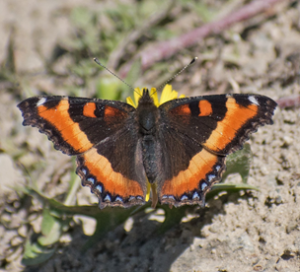
Climate Generalist Butterflies Expected to be Winners Under Climate Change in Canada
Forecasting species responses to climate change is integral to the development of adaptive and practical conservation decisions. Butterflies are climate-constrained in at least two ways, as ectotherms, the climate has a defining role in dictating where butterflies can live. Additionally, a warming climate may have huge impacts on their host plant availability. These constraints could mean certain butterfly species may have to move north, or up in elevation, to stay within their preferred temperature range. Predicting how butterflies might respond to such temperature and host plant shifts could inform decisions involving conservation prioritization, species management, and natural resource management.
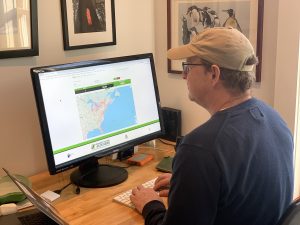
(English) New eButterfly Updates Just in Time for Spring
(English) We’re excited to announce some great improvements and new tools for eButterfly that we just released, with even more on the way. Our team has worked hard all winter to improve how the communications center operates, adding additional languages, upgrading the checklist submission process, improving the user experience for viewing checklists, updates that increase the performance of eButterfly, and many minor bug fixes.
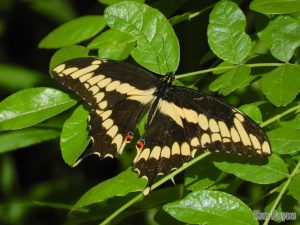
(English) A Giant Leap for a Butterfly in Vermont and Beyond
(English) In 2010 when the largest butterfly in North America fluttered among Ardys Fisher’s flowers at the end of July, she knew it was something neat. Now, our study published in Frontiers in Ecology and Evolution this week shows an unusually rapid northward range shift by the Eastern Giant Swallowtail over the last two decades.
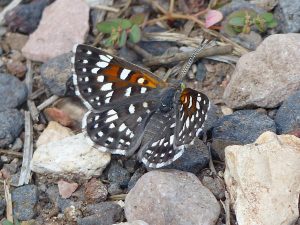
(English) Dramatic Decline in Western Butterfly Populations Linked to Fall Warming
(English) Western butterfly populations are declining at an estimated rate of 1.6% per year, according to a new report published this week in Science. The report looks at more than 450 butterfly species, including the western monarch, whose latest population count revealed a 99.9% decline since the 1980s.
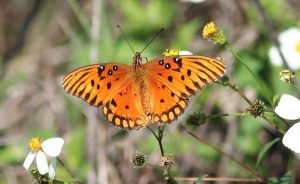
(English) 2020 eButterfly Year in Review
(English) From the first observation of 2020, a Gulf Fritillary nectaring on the Gulf coast of Florida submitted by Gary Leavens, to a Long-tailed Skipper nectaring at the end of December shared by mbspang, butterfly watchers added over 38,500 butterfly records to the ever growing eButterfly database of checklists. The reports fluttered in all summer long. We had more than 8,300 checklists with over 22,000 photographs comprising 523 species of butterflies reported during the year.
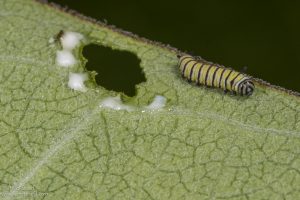
(English) International Monarch Monitoring Blitz 2020
(English) From July 24 to August 2, 2020, volunteers in Canada, Mexico and the United States helped monarch experts gain more information to enable better understanding of the distribution of the migratory monarch butterfly, an emblematic North American species. This year 520 volunteers across 68 states and provinces participated in the Blitz. They recorded 9,649 monarchs at various stages of their life cycle, from eggs to full-fledged butterflies. And together, they monitored 40,321 milkweed plants, the sole food source for monarch caterpillars.
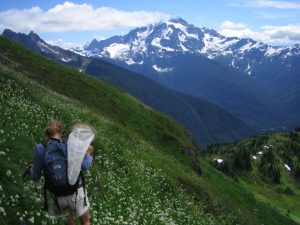
(English) Climate Change Could Cause Decline of some Alpine Butterfly Species
(English) The long-term effects of climate change suggests that the butterfly effect is at work on butterflies in the alpine regions of North America, according to a new study by University of Alberta scientists—and the predictions don’t bode well. The researchers used climate change models to understand the effects of changing ecosystems on alpine butterflies in North America. The results show that alpine butterflies who have specialized diets, meaning that they feed on one or a few plants, are more vulnerable to climate change because of fluctuations in their food. On the other hand, butterflies that have diverse diets are less likely to be affected.

(English) The Quest for My Biggest Butterfly Holy Grail – Jamaican Giant Swallowtail
(English) ‘Holy Grail’ butterflies are those rare, remote, hard-to-find, attractive species that linger in the imagination. For Peter Hall, the holiest of grails for many years, beginning in his childhood, was the Jamaican Giant Swallowtail (Papilio homerus). It was more like a myth than an actual species – seen by few and living in only two isolated and diminishing locations in the remoter rainforest of the Caribbean island, Jamaica.
(English) eButterfly’s Commitment to Fostering Inclusivity and Racial Justice
United by our passion for butterflies, eButterfly is a community where we share observations, photographs, and expertise. We also share a deep conviction that our collective experiences and observations will ultimately make the world a better place for butterflies, people, and the environment we inhabit together.

(English) Recorded eButterfly Webinar Now Available
(English) Are you looking to turn your love of butterfly watching into real science and conservation? Try eButterfly! Join eButterfly’s Rodrigo Solis for an hour-long recorded webinar and learn the basics and more about how to use eButterfly. Watch as he goes through the three easy steps to adding a butterfly checklist, how to use the new identification tool, explore data, and more. All from the comfort of your own screen and at your own pace. What are you waiting for? Let Rodrigo help get you started!

Papillons : la quête du Saint-Graal
For every butterflier, I would be willing to bet that over the years, when out on field trips, you have had some ‘special’ butterflies in mind that you hope to come across – in other words, ‘Holy Grails’ or, simply, grails.

Du Panama à l’Arctique : un nouveau site eButterfly
(English) It’s been over a year in the making. We’re excited to announce a completely new and retooled eButterfly. Now you can track butterflies you’ve seen from Panama to the Caribbean and north to the far reaches of the arctic, covering over 40 countries and more than 3,000 species of butterflies. Explore the new look and experience the social media-inspired features we’ve added to facilitate sharing and communication between users, or use the new efficient and fun, crowd-sourced verification tool. Help us build big butterfly data for science and education. Learn more…

Annual Monarch Breeding Population Size in Canada Linked to Spring Migration and Recolonization
New research published in Frontiers in Ecology and Evolution by scientists Tara Crewe (Bird Studies Canada), Greg Mitchell (Environment and Climate Change Canada) and Maxim Larrivée (Montréal Insectarium) highlights the importance of Canadian summer breeding habitat for the eastern North American migratory Monarch butterfly population. The study is based on 15 years of community science […]
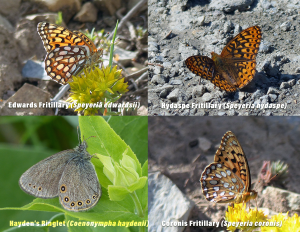
A Crazy Place for Fritillaries
By Peter Hall, Scientific and administrative advisor to e-Butterfly One of the most difficult groups of butterflies to identify, particularly in western North America, is that of the greater fritillaries. On a recent camping trip to Alberta and Montana, the butterflies in this large group were high among the list of butterfly target species I had […]
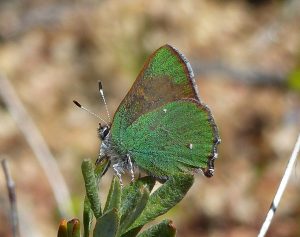
Super Bloom and Super Butterflies in Southern California
By Peter Hall, scientific and administrative advisor to eButterfly, Ottawa, Ontario Following a wet and cool winter in Southern California, this spring created a ‘super bloom’ of flowering plants and a visit there also produced a super butterfly crop of observations. For three weeks, from March 14 to April 3, my wife Judy and I […]
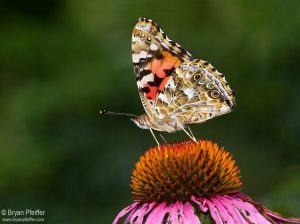
Painted Lady Butterflies are on the Move!
Painted Lady butterflies by the thousands are pushing northward in southern California. Like Monarch butterflies, with which they are sometimes confused, Painted Ladies are now heading northward to breed. But they’re not as predictable as Monarchs. Where exactly are they going? With a massive effort by volunteer citizen scientists, we can begin to piece together this […]
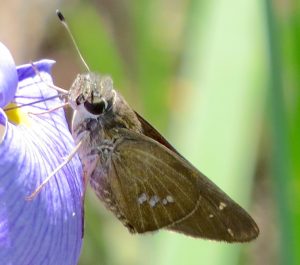
Butterfly Records for South Carolina: 1 June – 30 November 2018
By Dennis M Forsythe, Emeritus Professor of Biology, The Citadel, Charleston, SC Other than a successful Carolina Butterfly Society sponsored weekend 2-3 June to the Francis Marion National Forest, butterfly numbers and diversity were very low across all of South Carolina during June-August. A Midlands Chapter CBS field trip scheduled for 25 June to the Enoree District, […]
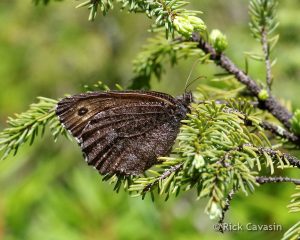
Expedition James Bay 2018
By Rodrigo Solis On June 19, 2015, five intrepid lepidopterists – Jacques Larrivée, Chris Schmidt, Rick Cavasin, Peter Hall and Max Larrivée – set out to explore the east side of James Bay in Quebec and identify the bogs to be monitored along a 10 degree latitudinal transect. Fast-forward to 2018 and this time, as a […]
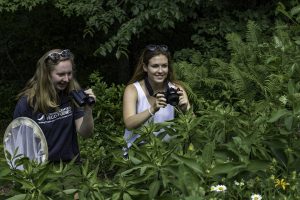
New Study Reveals e-Butterfly Provides Unique and Important Data
Opportunistic data collection programs like e-Butterfly allow volunteers to report species observations from anywhere, and can quickly assemble large volumes of both historic and current data. But how valuable is the data? A new peer-reviewed study by researchers at the University of Ottawa used eButterfly data and a comparable dataset of professionally collected observations across Canada to […]

Take Part in the 2018 International Monarch Monitoring Blitz!
From July 28 to August 5, butterfly watchers across North America are invited to take part in the International Monarch Monitoring Blitz to help provide a valuable snapshot of Monarch population status across their late summer range. Participation is simple: find a milkweed patch and look for Monarchs, counting the number of stems you examined […]
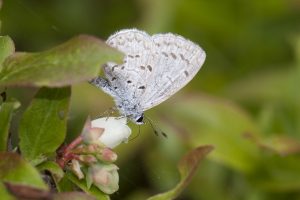
Getting the Blues: A View from Vermont
Although they measure barely an inch across, the azures (in the genus Celastrina) cause a mile of consternation among lepidopterists. Even as these butterflies present sparks of blue, their taxonomy remains cloudy and controversial. I won’t resolve it for you here. Instead, I’ll tell you some of what we know or suspect about these blues, […]
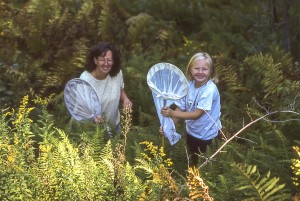
Making 2018 a Big eButterfly Year
Each year eButterfly keeps growing thanks to the dedication of many butterfly watchers and professional lepidopterists. In 2017 alone, 475 species were reported to eButterfly represented by nearly 12,000 checklists comprising almost 50,000 butterfly records and over 21,000 photographs. We now have recorded 741 butterfly species at over 35,000 locations across North America by nearly […]

Volunteer Data Reviewers Make eButterfly Shine
Anyone who regularly submits to eButtery has come to understand our data quality process. It is of paramount importance at eButterfly. Typos happen, misidentifications happen, and well-intentioned eButterfly observers sometimes just make mistakes. All of us at Team eButterfly have done it, and we’ll do it again. Mistakes are part of surveying butterflies. Our team of volunteer […]
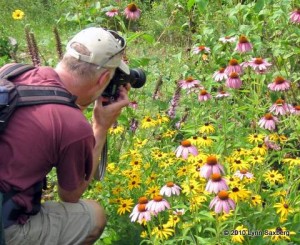
Leveraging Citizen Science for Butterflies
From a graduate school student’s lofty dream to a full-fledged citizen science program, eButterfly celebrates its 6th year with a new publication in a special issue of the journal Insects on butterfly conservation. The article – eButterfly: Leveraging Massive Online Citizen Science for Butterfly Conservation – highlights our accomplishments and outlines the bright future of […]
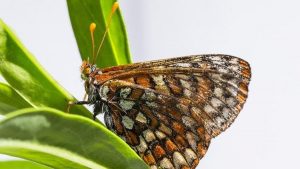
A Rare Butterfly Returns to Southern California
The endangered Quino Checkerspots (Euphydryas editha quino) are flying on the San Diego National Wildlife Refuge this spring for the first time in years. It selectively lays its eggs only on the Dwarf Plantain plant. Once found throughout California and into Mexico, the tiny Quino Checkerspot butterfly population is now extremely fragmented, which made it challenging for […]
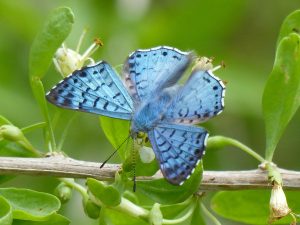
November Butterflying in the Lower Rio Grande Valley
In the northern part of North America, most butterfliers in the fall hang up their binoculars and cameras and head into semi-hibernation. However, more than a few simply head south in November to the Lower Rio Grande Valley in Texas. I have joined them from Ontario in the past two years and have been astounded […]
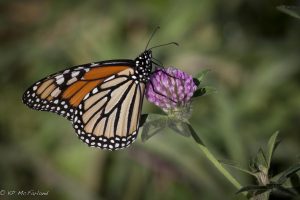
Canada’s Iconic Migrants at Grave Risk
From Coho Salmon to Caribou to the much cherished Monarch butterfly, migration is a key component of Canadian biodiversity. Migratory species, migration and movement all figured prominently at the semi-annual Committee on the Status of Endangered Wildlife in Canada (COSEWIC) deliberations on species at risk, held November 27 – December 2nd. Monarch butterfly migration is […]

Team eButterfly Visits Florida
Several members of the eButterfly team attended the 2016 XXV International Congress of Entomology from September 25 to 30 in Orlando, Florida. eButterfly sponsored a symposium titled, “Keeping Science in Citizen Science” during the meeting. The symposium was extremely well received and inspiring to all of us as many of the speakers demonstrated the value of citizen science data in […]
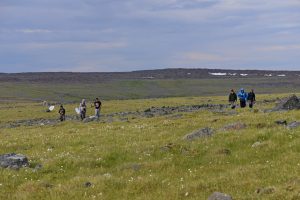
eButterfly and Nunavik’s Youth Team Up to Survey Arctic Butterflies
For the second consecutive year, eButterfly’s Max Larrivée teamed up with nine teenage Nunavik Inuits as part of a collaboration between the Montréal Insectarium and Nunavik Parks to survey butterfly diversity in the remote Québec arctic. The group led by Élise Rioux-Paquette, conservation officer for Nunavik Parks, and Elijah Ningiuruvik, Pingaluit National Park director, sampled […]

New Mission Monarch Project Powered by eButterfly
Butterfly enthusiasts across the country are being asked by Canadian experts to get out and look for milkweed plants, then to share their findings with Mission Monarch, a new project powered by eButterfly. The data collection protocol is very easy to follow and was designed so that everyone can participate. It’s a great way to enjoy the summer and some outdoor fun with friends or family.

Vermont Butterfly Big Year Takes Flight
With the help of an army of citizen scientists, the Vermont Butterfly Big Year aims to record every species of butterfly in Vermont this year. It’s a blend of science, education, competition, enjoyment, and a quest to monitor the changing nature of the state. Climate change, invasive species, habitat loss, and other environmental concerns are altering the […]

Make eButterfly Your New Year’s Resolution in 2016
Since its inception just a few years ago, eButterfly has grown in leaps and bounds thanks to the dedication of many butterfly watchers and professional lepidopterists. We hear from many users who tell us how eButterfly has helped them learn more about butterflies and has made their butterflying more fun and have more purpose. We also […]

The Secret Weapons of Cabbages: Overcome by Butterfly Co-evolution
For some of us in the north, a Cabbage White fluttering in the garden on a warm November day may be the last butterfly we see for the year. Recently, an international team of researchers has used the power of genomics to reveal the mechanisms of an ancient and ongoing arms-race between butterflies and plants, […]

eButterfly Visits the White House
This week eButterfly co-director Katy Prudic is at the White House in Washington, D.C. where she was invited to a small White House conference called Open Science and Innovation: Of the People, By the People, For the People. The meeting will focus on the new federal citizen science toolkit and other crowdsourcing sites like eButterfly. Read […]

‘No one looking’, so citizen scientist fills the gap
An avid citizen scientist, Mark Olivier, after having recorded and documented over 1,000 bird sightings has found another niche — butterflies. The era of citizen science has flourished with the advent of the Internet, partly because it provides a platform for bird watchers and outdoor enthusiast to share their sightings, said Olivier. Sault Naturalists have engaged […]

Epic James Bay Expedition
On June 19, 2015, five intrepid lepidopterists – Jacques Larivée, Chris Schmidt, Rick Cavasin, Peter Hall and Max Larrivée – set out to explore the east side of James Bay in Quebec. headed north from Ottawa, we travelled up the James Bay Highway, the northernmost paved road in eastern North America culminating at nearly 54 […]

The Waltz of the Hickory Hairstreaks
I have the great fortune of living in a mature hardwood forests on a two acre lot in Rigaud, Québec, Canada. This has allowed me to witness butterfly and moth behaviour and phenological events in ways I had never experienced in the past. This morning, similarly to last July, the first thing I saw when I […]

Admirals at Sea
Drifting in a boat several miles out in the Gulf of Maine, Chris Rimmer, director of the Vermont Center for Ecostudies, didn’t expect to see any butterflies. It was a warm July afternoon (well, for the coast of Maine) and Chris didn’t expect to see many birds either. But to his surprise, through his binoculars, […]

eButterfly’s Eclosure
The seed for eButterfly was planted over 60 years ago when Jacques Larivée started Études des Populations d’Oiseaux du Québec bird checklist program. Now with over 6 million records, it’s the longest-running bird checklist program in North America. The daily checklists have provided incredibly reliable information on changes in bird populations, phenology, and geographic and […]

December eButterflyer of the month: YOU!
To celebrate the completion of our 3rd eButterfly year, we wanted to take the time to thank all of our eButterflyers. Your contributions made 2014 our best so far. eButterfly is growing by leaps and bounds. Here are a few amazing statistics that are a testament to the power of citizen scientists when we come together and join […]

A Target on Your Back Is Useful
Life is hard, especially if you’re a butterfly. Always feels like there is a target on your back. Turns out some of those targets (AKA wing eyespots) are useful to deflect attacks away from the butterfly’s vulnerable head and body. Having eyespots allows butterflies to live longer and lay more eggs. Surprisingly this deflection hypothesis […]

November’s eButterflyer of the Month : Daniel Jones
This November’s eButterflyer of the month is Daniel Jones from Texas. Dan joined eButterfly last spring and has been an extremely productive eButterfly user and our top Texas contributor ever since! He is currently ranked second for the number of species recorded in 2014 in our top 100 with 132 species from 47 checklists contributed […]